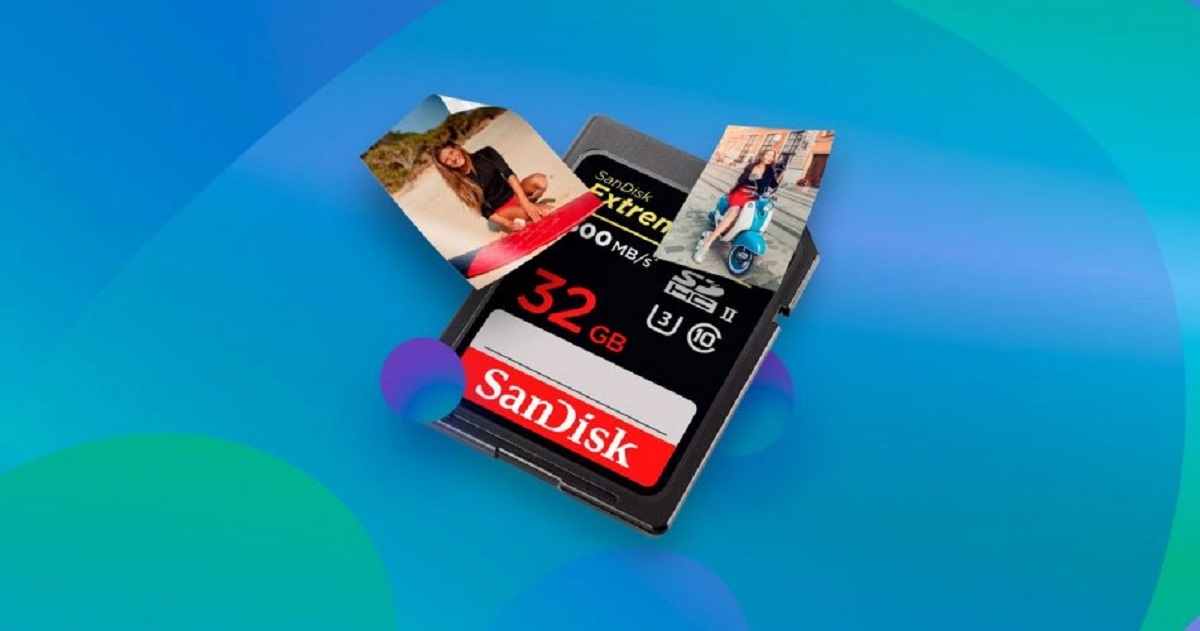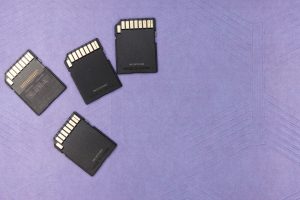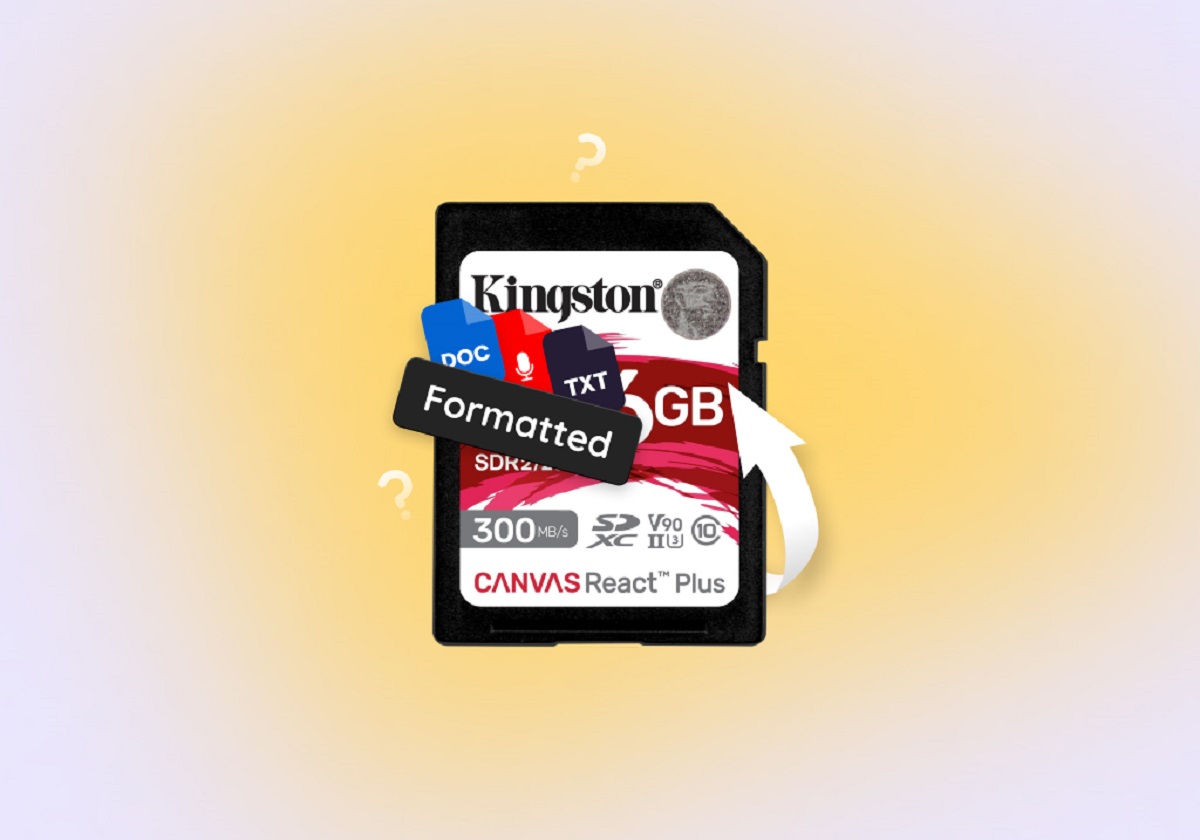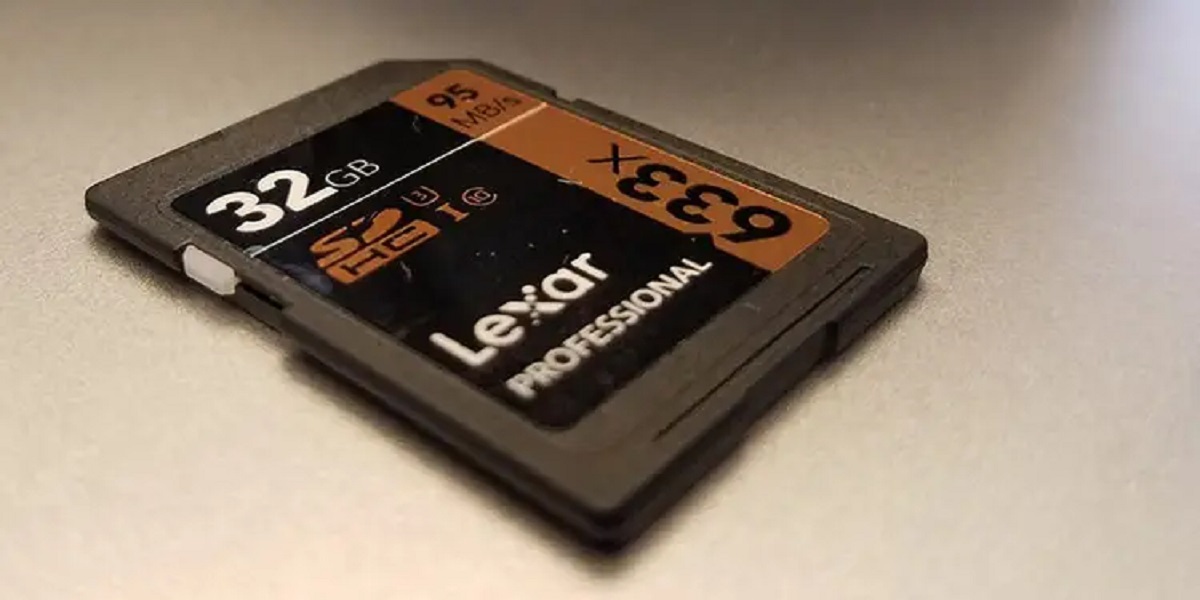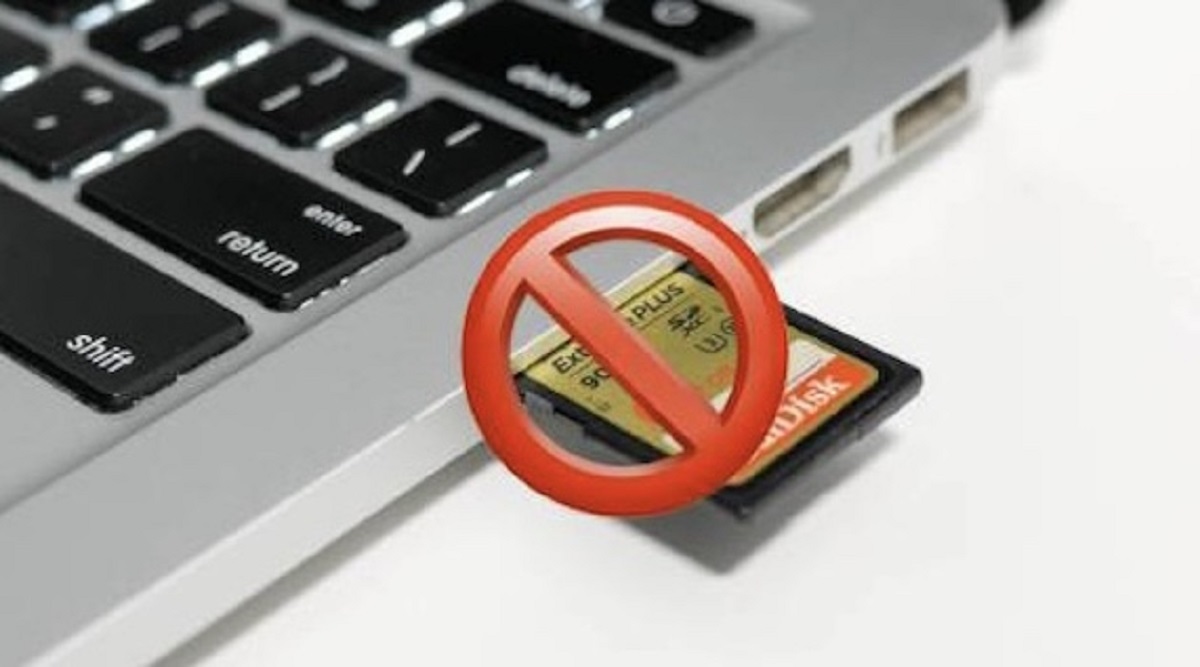Introduction
Have you ever accidentally deleted precious photos from your SD card and felt a sinking feeling in your stomach? It happens to the best of us. Thankfully, there are ways to recover those deleted photos and bring back those cherished memories. In this article, we will explore various methods and techniques to recover deleted photos from an SD card.
SD cards have become a popular storage solution for cameras, smartphones, and other digital devices due to their compact size and large storage capacity. While they offer convenience, they are not immune to data loss. Accidental deletion, formatting errors, and even device malfunctions can result in the loss of valuable photos.
Understanding how photos are stored on an SD card is essential to comprehend the recovery process. When you take a photo, the image is stored as data on the card. However, when a photo is deleted, it is not immediately wiped from the card. Instead, the file system marks the space previously occupied by the photo as available for reuse. Until new data is written over this space, the deleted photo can potentially be recovered.
There are several reasons why photos may get deleted from an SD card. Human error, such as accidental deletion or formatting, is one of the most common causes. Additionally, software or hardware issues, such as file system corruption or device malfunction, can also lead to photo loss. It’s important to be aware of these potential risks and take precautions to avoid permanent deletion.
To prevent permanent photo loss, it is essential to stop using the SD card immediately after realizing that photos have been deleted. Continued use of the card can overwrite the deleted images, making recovery nearly impossible. By removing the card from the device and keeping it safely aside, you can increase the chances of successful recovery.
In the next sections, we will explore different methods to recover deleted photos from an SD card. These methods include using data recovery software, utilizing a card reader and computer, or seeking professional assistance for in-depth recovery. By following the step-by-step instructions provided, you can increase the likelihood of retrieving your precious photos and restoring your peace of mind.
Understanding how photos are stored on an SD card
In order to effectively recover deleted photos from an SD card, it’s crucial to have a basic understanding of how photos are stored on this type of storage medium. SD cards use a file system, such as FAT32 or exFAT, to organize and manage data. Each photo captured by your digital device is saved as a file on the SD card.
When you take a photo, the image is converted into a digital format and stored as data on the SD card. This data includes information about the image resolution, color profile, and other metadata. The file format used for photos on most digital devices is JPEG, although some devices may also support other formats like RAW.
The storage capacity of an SD card is determined by the amount of memory it has. Common SD card capacities range from 2GB to 512GB, with larger capacities becoming more widely available. The storage capacity affects the number of photos that can be stored on the card before it reaches capacity.
Photos are stored in a hierarchical file structure on the SD card. At the root level of the card, you might find folders labeled DCIM (Digital Camera Images) or similar. Inside these folders, photos are further organized into subfolders or directories, usually labeled with names like “100CANON”, “101N
Reasons for photo deletion from an SD card
Accidental deletion is one of the most common reasons for photo loss from an SD card. Whether it’s a simple slip of the finger or mistakenly selecting the wrong option, it’s easy to delete photos unintentionally. However, accidental deletion is not the only cause of photo loss. Here are some other common reasons why photos can get deleted from an SD card:
1. Formatting the SD card: Formatting the SD card erases all the data stored on it, including photos. Sometimes, users may accidentally format the card instead of formatting another storage device or may unknowingly initiate the formatting process.
2. File system corruption: The file system on the SD card may become corrupt due to various factors such as improper ejection, malware or virus infections, or software glitches. When the file system is corrupted, the card may become unreadable, and the photos stored on it may be lost or inaccessible.
3. Hardware issues: SD cards are vulnerable to physical damage, such as exposure to extreme temperatures, moisture, or accidental bending or dropping. These hardware issues can result in data corruption or loss, including the deletion of photos.
4. Software errors: Errors within the digital device or the software used to access the SD card can lead to photo deletion. For example, a bug or glitch in the camera app or a malfunctioning firmware update can cause photos to be deleted or rendered inaccessible.
5. File transfer errors: When transferring photos from the SD card to a computer or another device, errors can occur. If there is a disruption in the transfer process or if some files are not properly copied, the photos can be lost or deleted in the process.
It’s important to note that the chances of recovering deleted photos from an SD card depend on several factors, including the extent of use after deletion, the cause of deletion, and the type of recovery method employed. The sooner you realize the deletion and stop using the card, the higher the chances of successful recovery.
In the following sections, we will explore different methods to recover deleted photos from an SD card. These methods range from using data recovery software to utilizing a card reader and computer, as well as seeking professional help for more complex recovery situations.
Precautions to avoid permanent photo loss
Preventing permanent photo loss is crucial when it comes to dealing with deleted or lost photos on an SD card. By taking a few precautions, you can minimize the risk of losing your precious memories forever. Here are some important steps to follow:
1. Stop using the SD card: As soon as you realize that photos have been deleted or lost, immediately stop using the SD card. Continuing to use the card can overwrite the deleted photos, making them irrecoverable. Remove the card from the device and keep it safely aside until you are ready to attempt the recovery process.
2. Do not format or reformat the SD card: Avoid formatting the SD card if you suspect that photos have been deleted or lost. Formatting the card will erase all the data, including any possibility of recovering the deleted photos. Keep the card as it is until you have tried the appropriate recovery methods.
3. Use a reliable card reader: When connecting the SD card to a computer or other device for recovery, ensure that you are using a reliable and compatible card reader. Using a faulty or incompatible card reader can cause further damage to the SD card or result in data corruption.
4. Create backups regularly: To avoid losing your photos permanently, it’s important to back up your photos regularly. Make it a habit to transfer the photos from your SD card to a computer or external hard drive, or utilize cloud storage options. By having multiple copies of your photos, you can easily recover them in case of accidental deletion or card failure.
5. Handle the SD card with care: SD cards are delicate devices and can be easily damaged if mishandled. Avoid touching the metal contacts on the card as oil and dirt can impair its functionality. Additionally, protect the card from moisture, extreme temperatures, and physical impact. Handle the card carefully when inserting or removing it from the device to minimize any potential damage.
These precautions can significantly reduce the risk of permanent photo loss from an SD card. By following these steps, you can enhance the chances of successfully recovering deleted photos and ensure the preservation of your cherished memories.
Method 1: Using a data recovery software
One of the most common and effective ways to recover deleted photos from an SD card is by using data recovery software. These software programs are specifically designed to scan the SD card, locate the deleted files, and restore them back to their original state. Here’s a step-by-step guide on how to use data recovery software:
1. Choose a reliable data recovery software: There are many data recovery software options available online, so it’s important to choose a reputable and reliable one. Look for software that is compatible with your operating system and specifically mentions SD card recovery capabilities.
2. Install and launch the software: Once you have selected your preferred data recovery software, download and install it on your computer. Launch the software and ensure that your SD card is inserted into the card reader and connected to the computer.
3. Select the SD card for scanning: In the data recovery software, you should be presented with a list of available drives and storage devices. Select your SD card from the list to initiate the scanning process. The software will start scanning the card to locate any deleted photos.
4. Start the scan: Depending on the size of the SD card and the amount of data stored on it, the scanning process may take some time. The software will thoroughly search the card for any traces of deleted photos and compile a list of recoverable files.
5. Preview and recover the deleted photos: Once the scan is complete, the data recovery software will present you with a list of recoverable photos. Take advantage of the preview feature to verify the content and quality of the photos before proceeding with the recovery. Select the photos you want to recover and choose a location on your computer to save the recovered files.
6. Safely eject the SD card: After successfully recovering the deleted photos, safely eject the SD card from the computer. This ensures that the recovered files are not accidentally overwritten or corrupted during the ejection process.
Data recovery software is a convenient and user-friendly option for recovering deleted photos from an SD card. However, it’s important to note that the success of recovery may vary depending on various factors, such as the extent of card usage after photo deletion and the complexity of the recovery situation. Remember to choose a reliable software and follow the instructions carefully for the best possible outcome.
Method 2: Using a card reader and computer
If you prefer a more hands-on approach to recover deleted photos from an SD card, you can use a card reader and a computer. This method involves directly accessing the SD card on your computer and utilizing various built-in tools and features. Follow these steps to recover deleted photos using a card reader and computer:
1. Connect the card reader to your computer: Insert the SD card into a card reader and connect it to your computer’s USB port. Ensure that the computer recognizes the card reader and mounts the SD card as a removable storage device.
2. Open the file explorer: Once the SD card is connected and recognized by the computer, open the file explorer to access the card’s contents. In Windows, you can open the file explorer by pressing the Windows key + E or by clicking on the folder icon in the taskbar.
3. Navigate to the SD card: In the file explorer, locate the SD card under the list of removable storage devices. It is typically labeled with a drive letter (e.g., E:, F:, or G:). Click on the SD card to open it and view its contents.
4. Enable hidden files: By default, the operating system may not display hidden files and folders on the SD card. To ensure that you can access all the files, including deleted ones, go to the “View” tab in the file explorer and enable the option to show hidden files.
5. Search for deleted photos: Once you have enabled the display of hidden files, search for deleted photos on the SD card. Deleted photos are often stored in a hidden folder, such as a “Recycle Bin” or “Lost.dir”. Explore these folders and look for any files that match the format and characteristics of your deleted photos.
6. Recover the deleted photos: Once you locate the deleted photos, select them and copy them to a location on your computer. It is advisable to create a new folder to store the recovered photos. Avoid copying the files back to the SD card itself, as this may potentially overwrite other recoverable deleted photos.
7. Safely eject the SD card: Once you have successfully recovered the deleted photos, safely eject the SD card from the computer to avoid any data corruption or loss. Right-click on the SD card icon in the file explorer and select the option to eject or safely remove the device.
Using a card reader and computer to recover deleted photos from an SD card offers a more manual approach. This method gives you direct control over the recovery process and allows you to explore the SD card’s contents thoroughly. However, it requires a certain level of technical knowledge and can be time-consuming, especially when dealing with large amounts of data.
Method 3: Seeking professional help for in-depth recovery
If the methods mentioned earlier have not been successful in recovering your deleted photos from an SD card, or if the situation is more complex, it may be time to seek professional help. Professional data recovery services specialize in retrieving lost, deleted, or corrupted data from various storage devices, including SD cards. Here’s how you can benefit from seeking professional help:
1. Assessment and evaluation: When you approach a professional data recovery service, they will first assess the condition of your SD card and evaluate the feasibility of recovering the deleted photos. They have specialized equipment, tools, and expertise to handle complex data recovery situations.
2. Advanced recovery techniques: Professional data recovery services employ advanced techniques that go beyond what can be done using software or DIY methods. They have access to specialized hardware and software solutions that can handle even the most challenging data loss scenarios.
3. Physical repairs and recovery: In situations where the SD card has suffered physical damage, such as a broken connector or water damage, professional recovery services can perform necessary repairs to make the card readable again. They have cleanroom facilities and skilled technicians to handle physical repairs safely.
4. Secure and confidential process: Professional data recovery services prioritize the security and confidentiality of your data. They have strict protocols in place to ensure that your recovered photos and any other sensitive data remain private and protected throughout the recovery process.
5. No data loss risk: By entrusting your SD card to professionals, you minimize the risk of further data loss. They have the expertise to handle delicate situations and prevent accidental overwriting or corruption of data during the recovery process.
When choosing a professional data recovery service, make sure to do your research and select a reputable and reliable provider. Consider factors such as experience, track record, customer reviews, and cost. It’s important to understand that professional data recovery services may involve additional cost compared to DIY methods, but they offer a higher chance of successful recovery in complex situations.
Remember to back up your recovered photos once you receive them from the professional service. Having multiple backups ensures that your photos are protected in case of future data loss incidents.
If you have exhausted all other options and are unable to recover your deleted photos, seeking professional help can be a worthwhile investment. These experts can utilize specialized techniques and resources to recover your precious memories from an SD card.
Tips to improve the chances of successful recovery
Recovering deleted photos from an SD card can be a delicate and intricate process. To maximize your chances of successful recovery, consider the following tips:
1. Act quickly: As soon as you realize that photos have been deleted from your SD card, stop using the card immediately. Continuing to use the card can overwrite the deleted photos, reducing the chances of recovery. The sooner you start the recovery process, the higher the likelihood of successful retrieval.
2. Avoid further write operations: To prevent overwriting the deleted photos, avoid performing any unnecessary write operations on the SD card. Do not save new files, take additional photos, or format the card until you have attempted the recovery process.
3. Use the right recovery method: Depending on the situation, different recovery methods may be more suitable. Assess the nature of photo deletion and choose a recovery method that aligns with the specific scenario. Data recovery software, card reader and computer, or professional help can each be applicable in different circumstances.
4. Keep the SD card safe: Protect the SD card from physical damage and further data loss. Handle it with care, avoiding exposure to extreme temperatures, moisture, or impact. Store it in a protective case or sleeve when not in use to prevent scratching or dust accumulation.
5. Make use of recovery software with preview feature: If you decide to use data recovery software, opt for a program that provides a preview feature. This allows you to see the deleted photos before recovering them, ensuring you can select the desired files and assess their quality.
6. Consider multiple recovery attempts: If the first attempt at recovery is not successful, don’t give up right away. Make multiple attempts using different methods or software if necessary. Sometimes, certain methods or software may have better success rates depending on the specific circumstances.
7. Protect the recovered photos: After successfully recovering the deleted photos, make sure to back them up to multiple locations. Copy them to your computer’s hard drive, an external storage device, or cloud storage. Creating multiple backups ensures that even if the original files are lost again in the future, you can always rely on the backup copies.
While these tips can improve your chances of successful photo recovery, it’s important to remember that there are no guarantees. The success of recovery depends on several factors, such as the extent of card usage after deletion and the complexity of the recovery scenario. If you are uncertain or uncomfortable with the recovery process, consider seeking professional help from data recovery experts.
Common mistakes to avoid during the recovery process
When attempting to recover deleted photos from an SD card, it’s important to be aware of common mistakes that can hinder the recovery process or even cause further data loss. By avoiding these mistakes, you can maximize your chances of a successful photo recovery. Here are some common mistakes to avoid:
1. Continuing to use the SD card: One of the most critical mistakes to avoid is continuing to use the SD card after realizing that photos have been deleted. Every operation performed on the card increases the risk of overwriting the deleted photos, making them irrecoverable. Stop using the card immediately to prevent further data loss.
2. Formatting the SD card: Formatting the SD card should be avoided, especially after photo deletion. Formatting the card will erase all data, including deleted photos. If you mistakenly format the card, the chances of recovering the deleted photos diminish significantly. Always double-check before performing any format operations.
3. Using unreliable recovery software: When using data recovery software, it’s crucial to select a reliable and reputable program. Using unreliable software can lead to incomplete or unsuccessful recovery attempts. Do your research, read reviews, and choose a software solution known for its effectiveness in recovering photos from SD cards.
4. Saving recovered photos back to the SD card: To avoid any potential data overwriting or corruption, it is vital not to save the recovered photos back to the same SD card. Saving recovered photos directly to the card can result in further data loss or even overwrite other recoverable files. Instead, save the recovered photos to a different location, such as your computer’s hard drive.
5. Ignoring backups: If you regularly back up your photos from the SD card to another storage medium or the cloud, make sure to check for backups before attempting any recovery process. Restoring from a backup is often faster and safer, as it eliminates the chance of further data loss during the recovery process.
6. Mishandling the SD card: Mishandling the SD card can cause physical damage, which may further complicate the recovery process. Avoid touching the metal contacts, exposing the card to extreme temperatures, or subjecting it to physical impact. Handle the SD card with care and store it in a safe place when not in use.
7. Giving up too soon: Photo recovery can be a complex and time-consuming process. It’s important not to give up too soon if initial recovery attempts are unsuccessful. Try different recovery methods, software, or seek professional help before concluding that the photos cannot be recovered.
By avoiding these common mistakes, you can increase the likelihood of a successful photo recovery. Remember to be patient, cautious, and follow the appropriate recovery methods to maximize your chances of retrieving your precious deleted photos.
Conclusion
Accidentally deleting photos from an SD card can be a distressing experience, but it’s important to remember that there are ways to recover those precious memories. By understanding how photos are stored on an SD card and the various methods available for recovery, you can increase your chances of successfully retrieving the deleted photos.
We discussed three primary methods for photo recovery from an SD card. Using data recovery software provides a user-friendly approach and has a high success rate, while using a card reader and computer offers a more hands-on option. In more complex situations, seeking professional help from data recovery services can be a viable choice, especially when physical damage or extensive data loss is involved.
Throughout the recovery process, it’s crucial to take precautions to avoid permanent photo loss. Acting quickly, avoiding further write operations, and using the appropriate recovery method are key to improving the chances of successful recovery. Additionally, handling the SD card with care, making backups, and being cautious about common mistakes can contribute to a smoother and more effective recovery experience.
Remember, successful photo recovery is not guaranteed in every scenario, and the outcome may vary depending on factors such as card usage after deletion and the complexity of the recovery situation. If you are uncertain or uncomfortable with the recovery process, it is always advisable to seek professional assistance from data recovery experts.
Ultimately, the most important step moving forward is to regularly back up your photos from the SD card. By creating multiple copies of your cherished memories, you can ensure their safety and minimize the impact of any future data loss incidents.
With a proactive approach, careful execution, and the knowledge gained from this article, you can confidently recover deleted photos from your SD card and preserve those irreplaceable moments that hold sentimental value.







